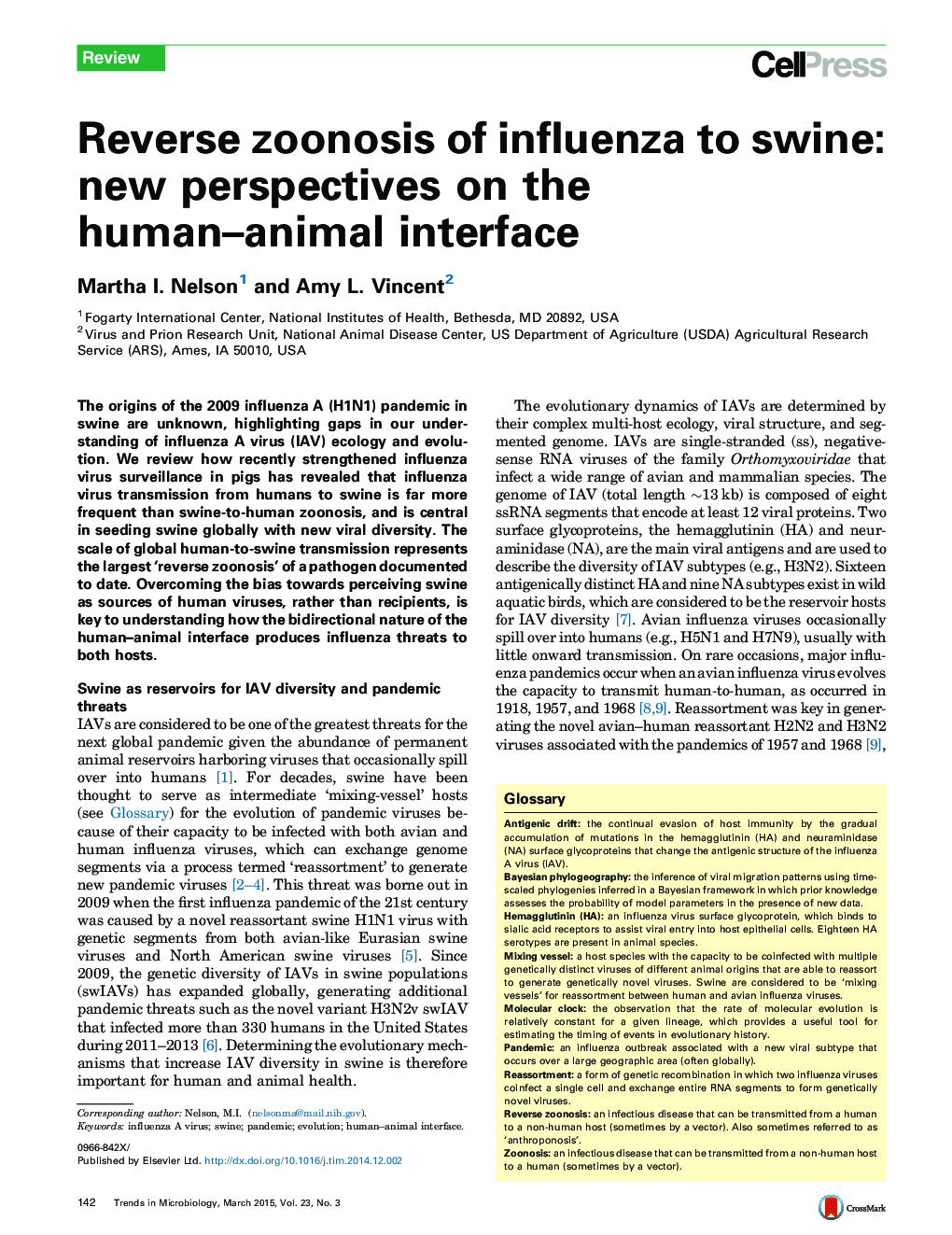| کد مقاله | کد نشریه | سال انتشار | مقاله انگلیسی | نسخه تمام متن |
|---|---|---|---|---|
| 3421838 | 1226689 | 2015 | 12 صفحه PDF | دانلود رایگان |
• Humans transmit far more influenza viruses to swine than swine transmit to humans.
• Human-to-swine transmission is key to the evolution of influenza diversity in swine.
• In effect, humans sow the seeds of future pandemics by infecting pigs.
• A balanced view of the bidirectional nature of the human–animal interface is needed.
The origins of the 2009 influenza A (H1N1) pandemic in swine are unknown, highlighting gaps in our understanding of influenza A virus (IAV) ecology and evolution. We review how recently strengthened influenza virus surveillance in pigs has revealed that influenza virus transmission from humans to swine is far more frequent than swine-to-human zoonosis, and is central in seeding swine globally with new viral diversity. The scale of global human-to-swine transmission represents the largest ‘reverse zoonosis’ of a pathogen documented to date. Overcoming the bias towards perceiving swine as sources of human viruses, rather than recipients, is key to understanding how the bidirectional nature of the human–animal interface produces influenza threats to both hosts.Video Abstract To view the video inline, enable JavaScript on your browser. However, you can download and view the video by clicking on the icon belowHelp with MP4 filesOptionsDownload video (13752 K)
Journal: - Volume 23, Issue 3, March 2015, Pages 142–153
